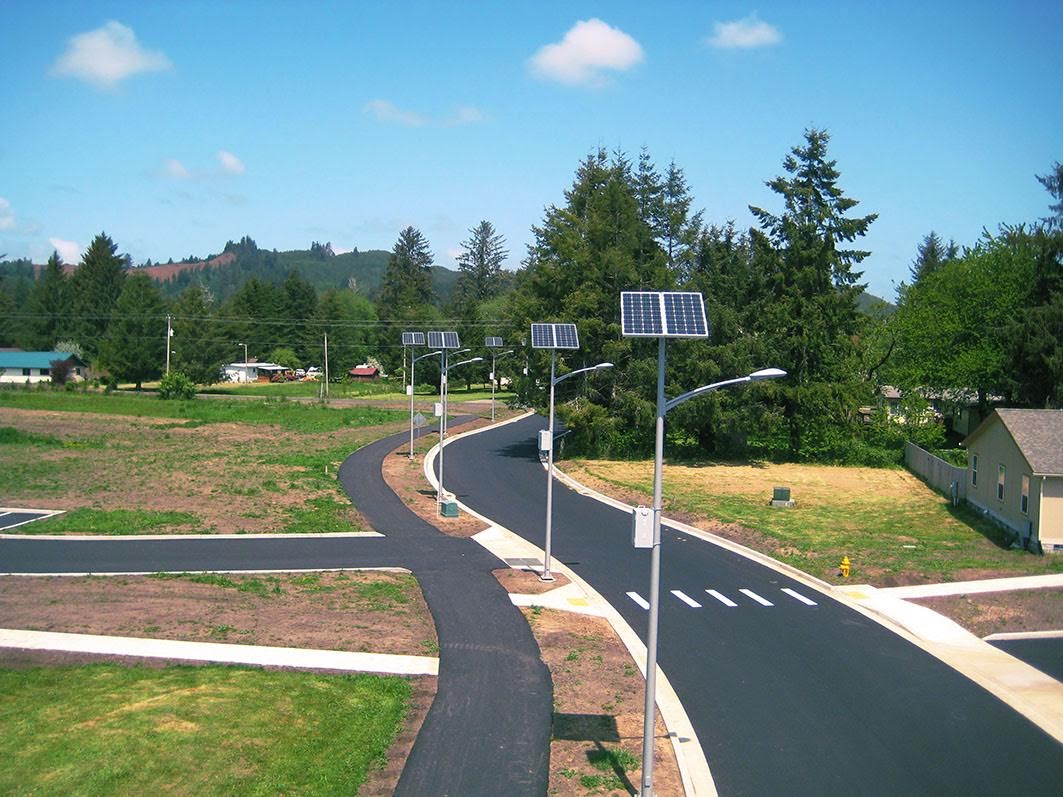Where Does Solar Power Work? Not Just the Sun Belt!Posted by Becky Johanson in The Basics.
Solar Power in the Sun BeltYou're probably wondering if solar power "works" in your area. After all, you do need adequate sun hours in order to power our solar street lights. If you're part of the Sun Belt, that's a very popular region for solar power and there's no question of whether or not solar power will work for you. The Sun Belt is a term used in the United States to denote the area of the country located roughly under the 36th parallel. It is the part of the country which gets the most sun and with the hottest climate, as it covers the entirety of the southern border. The unifying aspect of the climate is that the area experiences long, hot summers and mild winters. Since this is a large area, covering parts or the entirety of 15 states, there is also a large variation in specific conditions. For example, states of Nevada, Arizona, California, New Mexico, and Texas are at least in part deserts. On the other hand, Oklahoma, Texas, Mississippi, Louisiana, Alabama, Georgia, Tennessee, and both Carolinas experience subtropical, while Florida belongs to the tropical climate zone. This particular position has had great benefits for the states. In fact, the greatest part of the estimated growth of the US economy is estimated to be centered in this area. This area of the US also has some of the largest metropolitan areas in the country, including Los Angeles, Dallas, Atlanta, Houston and Miami. In short, solar power is a very viable option for cities and towns in the Sun Belt, since the days are long, the nights are short, and most areas have the luxury of warm, sunny days. The enormous growth of solar power, both in private and industrial industries, proves the growing investment. But What About Solar Power Out of the Sun Belt? Does That Work?Areas outside the Sun Belt are also viable candidates for solar energy. In fact, even if you move away from the sunny south, the effectiveness of the solar panels stays intact. Solar panels even work in cold climates, so you don't need to worry about a lack of sun hours in colder regions. The drawback of traditional solar panels is that they can only be effective during the day. In order to sustain a 100 Watt power draw through the night, you would need up to 800 Watt of solar power, which is double of what you would need in the Sun Belt. The great thing about solar power is that it is highly customizable, increasing your solar street lights ROI. The technology in this field is constantly improving, and the prices per unit are dropping, which means you can expect to see the return on your investment much faster. What Can Solar Street Lights Do for My Community?With proper design from a qualified lighting engineer, solar-powered street lights can do wonders. First, many solar lighting fixtures are attractive for public areas with a lot of foot traffic. Not only do they provide a cost-effective, green method of lighting public areas, but they draw fantastic attention from the public with their combined aesthetic and technological look. It's common that media outlets give solar lighting projects a lot of attention as well, so don't be surprised if a news crew contacts you to highlight a fantastic decision. Wherever you are in the contiguous United States, solar works! It doesn't matter if you're in the sun belt or not, we've got a solar project that's perfect for your application, whether its for parking lots, streets, or municipality use. Thanks for reading, and we hope you have an energy-filled, fantastic day.
The Basics
|
ArchivesNo Archives Categories
Want More Info? |
LATEST NEWS & ARTICLES
